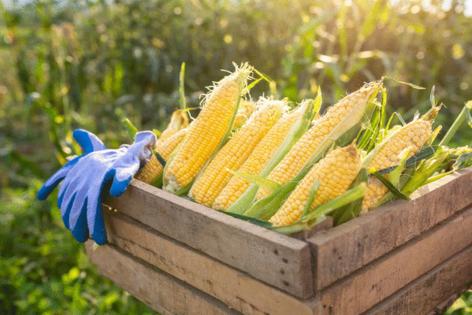On Nutrition: Eat for the season
Published in Nutrition
It’s corn season in our part of the country. Not just any corn. This is the sweet variety that many of the farmers in our area plant to share with family and friends. It’s this time of year when I find this cereal grain of starchy sweet seeds totally irresistible.
Come to think of it, the tomatoes our neighbors so willingly share with us in these waning days of summer are just as tantalizing. And even though the apples on my trees are not quite ripe for fall harvest, my grandkids are already begging to pick the green ones.
Is there any advantage — nutritional or otherwise — to buying (and eating!) locally produced fruits and vegetables shortly after they are harvested?
Sure enough is. Produce that is picked (and consumed!) at peak ripeness has also reached the height of its flavor. Makes me think of the advice I got several years ago from a good friend and well-respected chef.
When asked the best way to prepare corn on the cob, he replied: “Put a pot of water on the stove. When it starts to boil, go to your garden and pick the corn. Run into the house, remove the husks and dip in boiling water.”
Point: The shorter the time between harvest and eating, the better the flavor and nutritional value. Sweet corn especially loses its yummy taste the longer it is stored. Refrigeration helps slow down this process.
Fresh produce is also at its peak nutrient content right after it’s picked. Nutrients such as vitamin C begin to decline as soon as it is harvested. In fact, if you are in the habit of allowing fresh treasures from neighbors or markets to languish for several days in your kitchen, you might consider buying frozen. Commercially frozen fruit and vegetables are picked and “flash-frozen” at peak ripeness. So they retain a good amount of nutrients.
Still, who can argue with the taste and texture of a crisp ear of corn straight from the field? Or a juicy tomato right off the vine? Just remember, even the freshest produce will lose nutrients rapidly if you cook them to death.
We can also save money when we buy food that is produced locally in its natural growing season. I love that fresh cantaloupe and peaches are plentiful and cheap this time of year. And besides corn and tomatoes, summer squash and zucchini are good summer buys.
With fall approaching, I’ll be eating more apple dishes as well as broccoli, cauliflower and sweet potatoes. Find a complete list of “what’s in season” for each season of the year at fruitsandveggies.org.
One last reason to consider shifting our diets to consume foods in their respective harvest seasons of the year: It’s a really good way to improve the variety of foods we eat. And this translates to a wider variety of nutrients to keep these bodies vibrant for many more seasons.
©2025 MediaNews Group, Inc. Distributed by Tribune Content Agency, LLC.










Comments